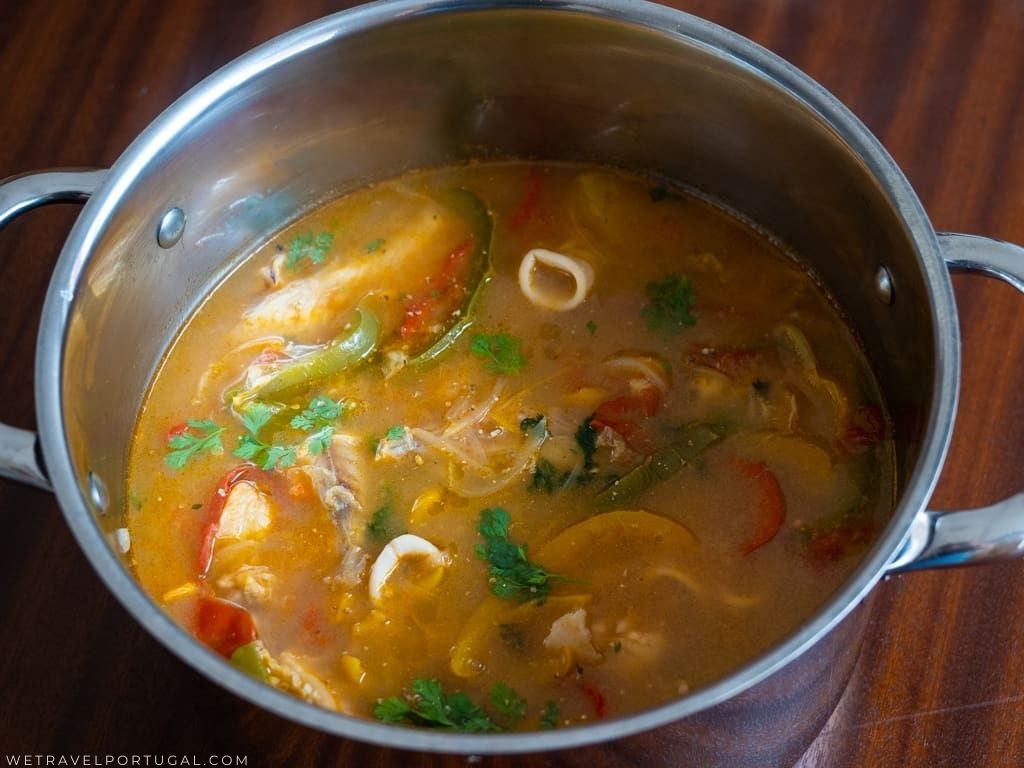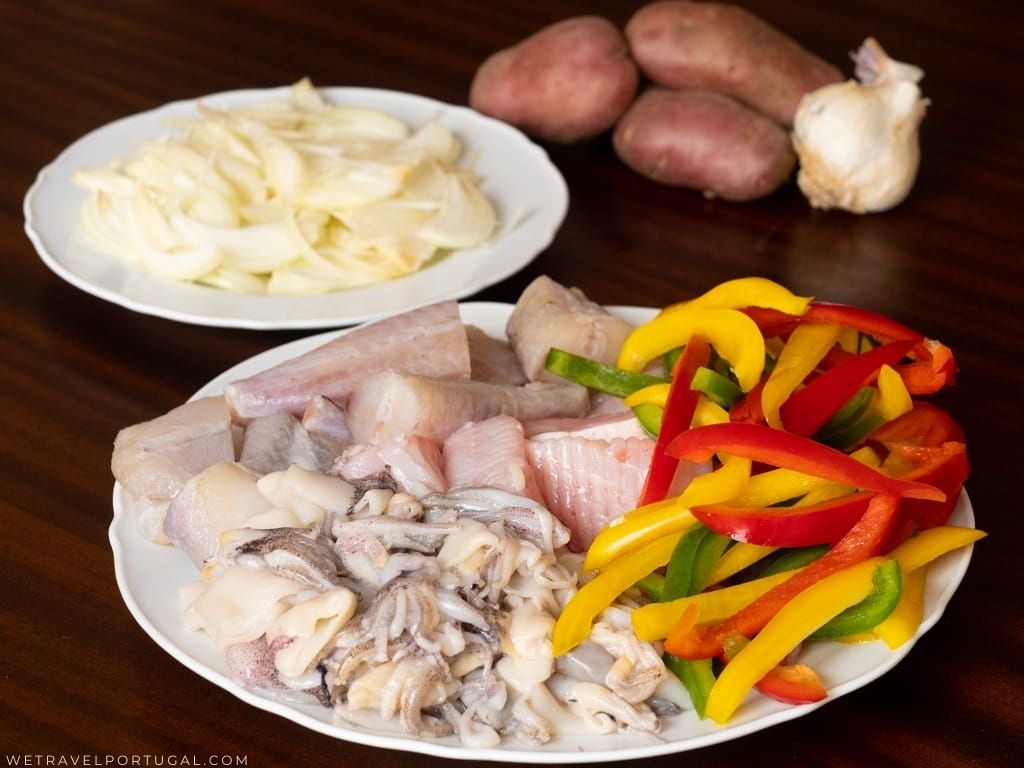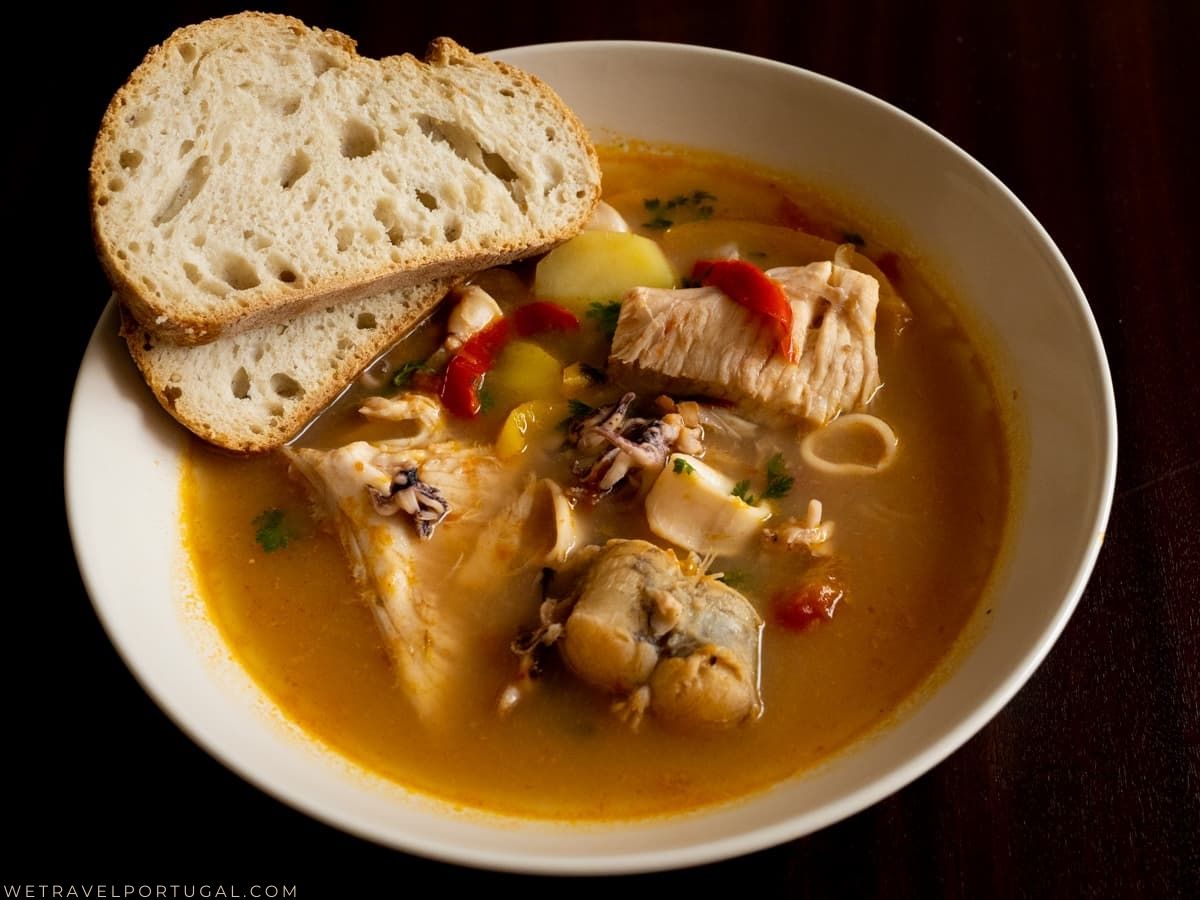Caldeirada is a traditional Portuguese and Galician dish comprising varied fish, vegetables, spices and herbs, stewed in a rich broth. It is believed to have been created by fishermen, who needed a fulfilling meal after a day at sea. Back then the fish used would vary depending on the catch of the day and would often be those with least commercial value.
Nowadays, you can still find some ingredient variations from one region to another, and a caldeirada from the Algarve will be different from a caldeirada in the region of Lisbon. Regardless of local variations, they all follow a certain fish-vegetable ratio, and are made in a similar way, resulting in an incredible meal after a day on the beach, even if you are not out there fishing!
Regional Variations of Caldeirada
Like many dishes from traditional Portuguese cuisine, this renowned dish can vary from one region to another. In the south, the most popular fish used are grey mullet, seabream, eel, and monkfish. The Caldeirada poveira from Póvoa de Varzim, in the northern region, includes ray, monfish, squid, and clams, as well as potatoes, peppers, and onion.
In Setúbal, the fish used are dogfish, toadfish, monkfish, which are combined to peppers, potatoes, onions, and herbs like mint, coriander, and thyme. The key ingredients of Setúbal’s caldeirada, according to the locals, are the livers from the fish used, and small short pasta which is added at the end of the preparation.

Curious about buying fish in Portugal? Especially the types, translations and how to buy it? Read our guide to buying fish here!
Meaning of the word Caldeirada?
The word caldeirada is the combination of the word caldeira meaning boiler, which alludes to the pot where the ingredients are stewed, and the suffix ada that indicates the idea of sets, and food preparations such as feijoada (bean stew) and sardinhada (grilled sardines). Caldeirada is the generic Portuguese name for a variety of fish stews, so you will often come across more specific names according to the region it belongs to, or the ingredients used in the preparation, for example, Caldeirada à Algarvia.
What is the difference between Caldeirada and Cataplana?
For those familiar with Algarve’s cataplana, you might be wondering how it differs from a caldeirada. While both dishes have similar ingredients, a cataplana refers to the unique preparation made in a cataplana: the two-sided copper pots you see all over the Algarve. Differently from the caldeirada, the cataplana is not stewed, instead the ingredients are gently steamed in the sealed pot similarly to what happens in a pressure cooker.

Our Caldeirada Recipe
The traditional way of making a caldeirada is to add layers of the raw vegetables, coat them in wine and fish stock, and simmer until the potatoes start to soften. After that you add your fish and let it stew just for enough time to evenly cook your ingredients. Some recipes call for clams, which are the first ingredient to enter the pot, forming a layer at the bottom which will prevent the vegetables from burning.
A Modern Approach to Caldeirada
For our recipe, we decided to go for a more modern approach, so we lightly fried some of the ingredients before simmering them. This will make the flavours pop! The fish we are using are monkfish, skate, and squid. But you can add prawns, clams, and different types of fish of your preference, as long as it doesn’t have too many bones.
It’s preferable to use larger loin pieces with the spine which allows the fish to cook slower and prevent it from falling apart. Depending on the fish you are using, you can also leave the skin on. As for the fish stock, we always prefer to use homemade stock, so if you are filleting your own fish, make sure to keep the head and other parts that won’t be used, so you can make a great homemade fish stock.

To enhance all of the flavours of this delicious stew, we used some classic Portuguese seasonings and herbs: bay leaves, cilantro, garlic, paprika, piri-piri, and cumin. You can serve your caldeirada with some crusty bread, or with white rice. This one pot recipe is perfect for a late lunch or summer dinner, and a great introduction to some of the Portuguese flavours and cooking traditions.
Fish Preparation
In this recipe we’re using 400g of monkfish loin, 400g of skate wing, and 300g of squid. The monkfish should still contain it’s bone and be cut into large pieces. The skate wing should have its skin removed and also be cut into large pieces. We’ll be using 300g of squid which will be the body tube and tentacles that are cleaned and sliced. This might sound a bit intimidating, but a good fish monger will help you prepare the fish to your needs!

Caldeirada de Peixe – Traditional Portuguese Fish Stew

Have you tried this recipe? Let us know in the comments!
More Portuguese Seafood Recipes You Will Love:
Surrounded by the Atlantic coast, Portugal has the freshest and most varied fish and shellfish! Which combined with the simplicity of the cooking techniques, results in delicious meals and recipes very simple to replicate at home.


